Mysteries of the Intestines Solved with a Device that Simulates the Intestinal Environment
November 1 is Bifidus Yogurt Day. The day was established by Morinaga Milk Industry Co., Ltd., a company that manufactures and sells milk, milk products, and other products.
The intestinal bacteria that live in our intestines have a close relationship with the Bifidus and lactic acid bacteria contained in yogurt. Such intestinal bacteria serve a variety of beneficial functions in our body and have recently been shown to even affect cognitive and immunological functions. Meanwhile, there is much that is still unknown about intestinal bacteria. It is necessary to perform experiments and research within an environment that resembles the human intestines.
Therefore, in June of 2023, Shimadzu Corporation started trial sales of a “gut bacteria co-culture device” that can simulate the environment inside the intestines. The following is from an interview with Akira Sen, who works in the Microbiota Research Section, Innovative Research Institute, R&D Division of Morinaga Milk Industry Co.,Ltd.
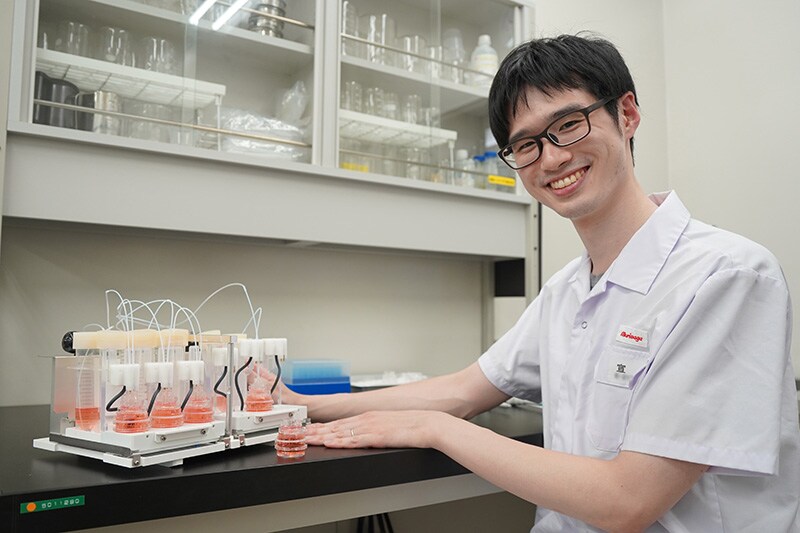
- *Trial sales are available in Japan only.
Is There No Oxygen in the Intestines?
“Though oxygen is essential for most human activities, actually there is almost no oxygen inside the intestines, especially the large intestines. Most intestinal bacteria will die if exposed to oxygen.”
When he first joined Morinaga Milk, Mr. Sen was assigned to clinical testing for materials research and was involved in investigating the functional properties of Bifidobacteria and lactic acid bacteria. Currently, he is involved in observing the overall gut microbiota and searching for new functional properties and corresponding mechanisms. His mission is to answer the question “Are bacteria in human intestines alive?”
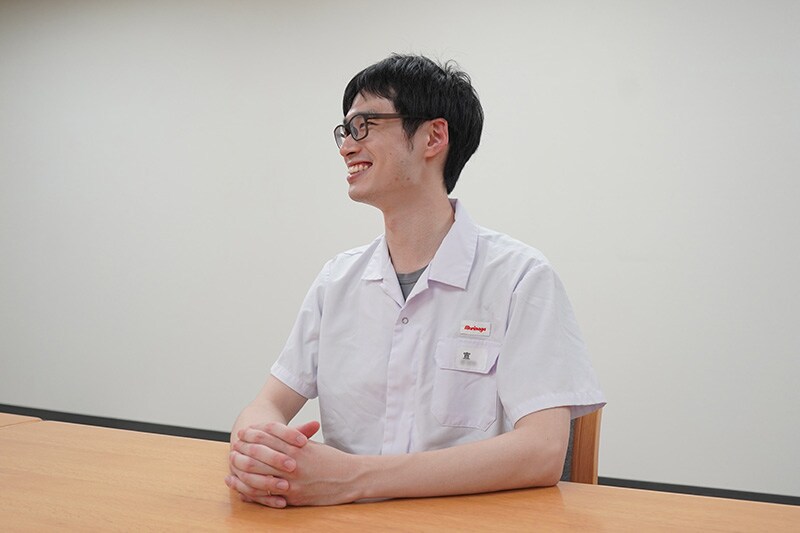
Human intestines reportedly contain over 100 trillion bacteria consisting of over 1000 types.* The bacteria in the intestines and the cells in the surface layer of the intestines (epithelial cells of the intestinal tract) are thought to have a mutual effect on each other that produces a wide variety of metabolites. Investigating the mechanisms involved in those processes requires culturing both bacteria and cells simultaneously (co-culturing). The epithelial cells in the intestinal tract require oxygen to survive, but intestinal bacteria will die if exposed to oxygen. Needless to say, it is very difficult to artificially culture both cells and bacteria simultaneously in a manner similar to an actual intestinal tract. One day, as he was engaged in such research, a colleague at the laboratory where Mr. Sen worked told him about Shimadzu’s “gut bacteria co-culture device.”
“When I first heard about the device I was very surprised. Co-culturing would be very useful as a technology for researching the mutual interaction between humans and their gut bacteria, but I had given up hope that such technology would become available due to the difficulty of actually achieving co-culturing. I never even imagined that a dedicated device would become available.”
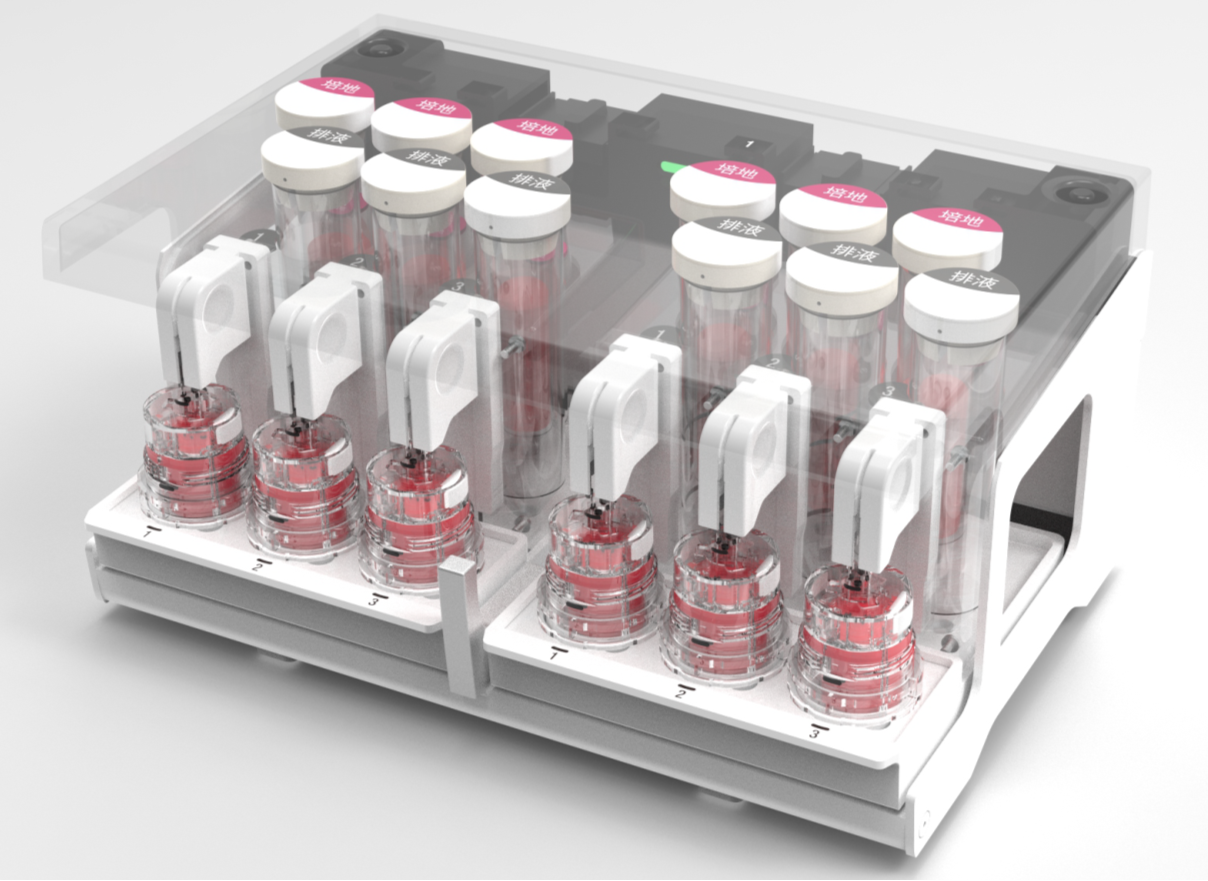
Co-culturing is now possible by sealing a culture medium that contains oxygen in a container so that the medium only contacts intestinal epithelial cells.
Publishing a Paper Not Initially Intended
Mr. Sen started using the device in cooperation with the development of the trial version gut bacteria co-culture device.
In the device, containers with the intestinal epithelial cells and gut bacteria sealed inside are placed. Then the bacterial culture medium is periodically replaced with a fresh medium to prevent excessive bacteria growth. Simulating the intestinal environment in that manner enables the co-culturing of cells and bacteria in about 3 days. Mr. Sen felt that “the trial unit was able to replicate the environment inside the intestines much more closely than I even imagined.” Gradually, he began to think that “maybe it could also be used to evaluate the interactions between metabolites produced by the intestinal epithelial cells and gut bacteria.”
Checking the culture solution from the device revealed that the quantity of metabolites with immunoregulatory effects (such as indolelactic acid) had increased due to intestinal bacteria (Bifidobacteria) acting on metabolites produced by the intestinal epithelial cells. That showed a relationship between the intestinal epithelial cells and gut bacteria more clearly than expected. Those results were published in an article included in the April 2023 issue of the scientific journal Frontiers in Microbiology.
“My feeling after publishing the article was gratitude. I felt very happy to have received so much support from people involved both within and outside the company.”
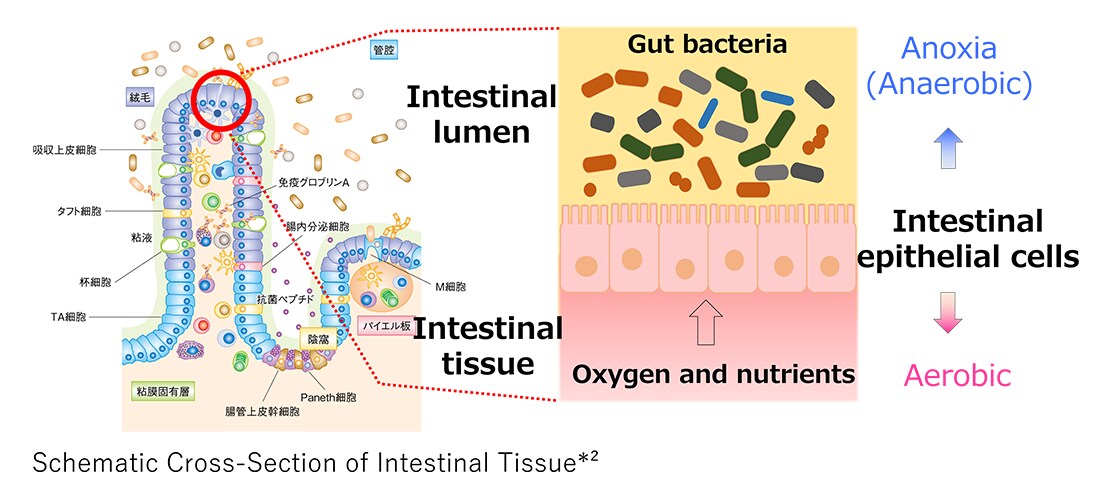
Co-culturing achieved by creating aerobic conditions in areas in contact with intestinal epithelial cells and anaerobic conditions in areas in contact with the gut bacteria.
Mr. Sen has been interested in metabolites since he was a student. He had already been using Shimadzu analytical and measuring instruments, so he was surprised to learn that such a co-culturing device existed.
“I had this impression that Shimadzu devices were mostly used for chemistry applications, and I did not realize that Shimadzu was involved in the life sciences as well. During this project, the many discussions with Shimadzu engineers allowed me to witness their process of steadily making small improvements, even for detailed specifications. That deepened my impression of Shimadzu as a manufacturer that values how users feel about using their products.”
Offering Products in a Convincing Manner
Mr. Sen says that his goal is to figure out how to apply the experimental results to Morinaga Milk products.
“The functions of the gut bacteria replicated in test tubes still differ significantly from actual phenomena in the body. For example, even if components beneficial for maintaining health are discovered in the laboratory, it remains uncertain whether they will actually be beneficial in the body, where complex interwoven factors are involved. We still need to develop an in vivo method of verifying how closely such laboratory conditions approximate actual conditions inside the intestines. In addition, we need to apply those research results for product development as soon as possible.”
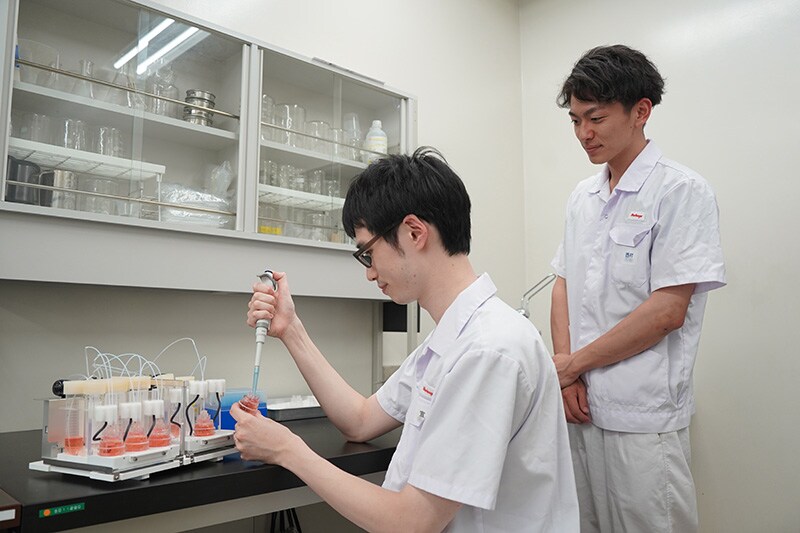
Treating the Gut Microbiota as an Organ that Can be Changed
“Since the gut microbiota can affect various aspects of health, it can be thought of as an organ in the body. Our gut microbiota is constantly changing due to strong effects from the food we eat. Normally, if an organ is not functioning properly or is affected by a congenital disorder, it must be treated with drugs. Similarly, our gut microbiota can be changed by modifying our dietary or lifestyle habits. That point has been very appealing to me and is the reason I continue my research work.”
Mr. Sen’s sense of curiosity never stops. Together with his colleagues, he aims to contribute to people’s health. That is why Shimadzu, which is operated based on the management principle “Realizing Our Wishes for the Well-being of Mankind and the Earth,” is supporting Mr. Sen in his challenge to solve the mysteries of gut bacteria.
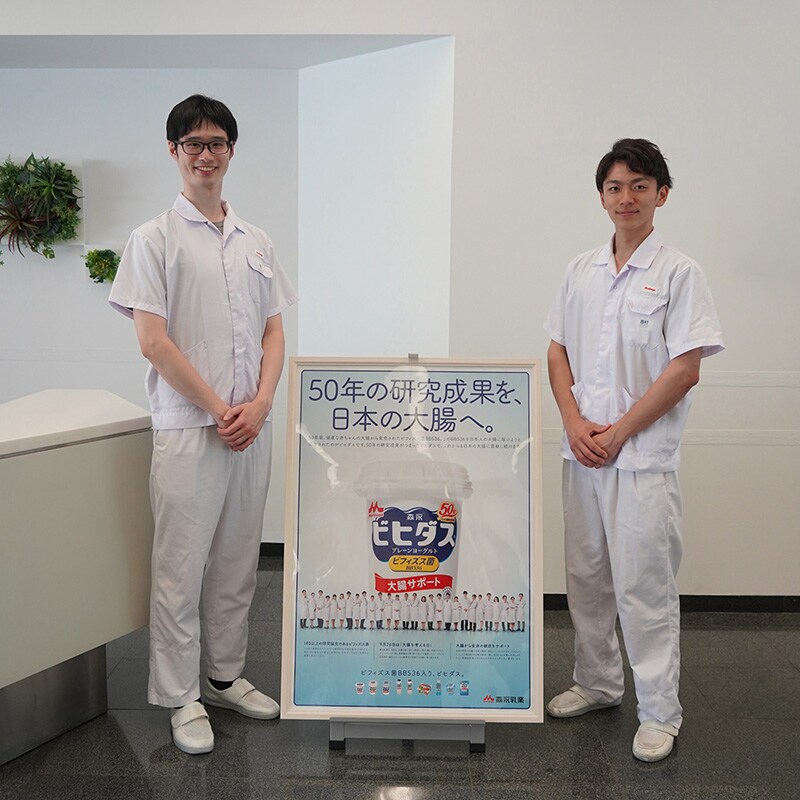
Mr. Sen (left) and his colleague Mr. Nishimura who participated in the interview
 Page Title and URL Copied.
Page Title and URL Copied.


